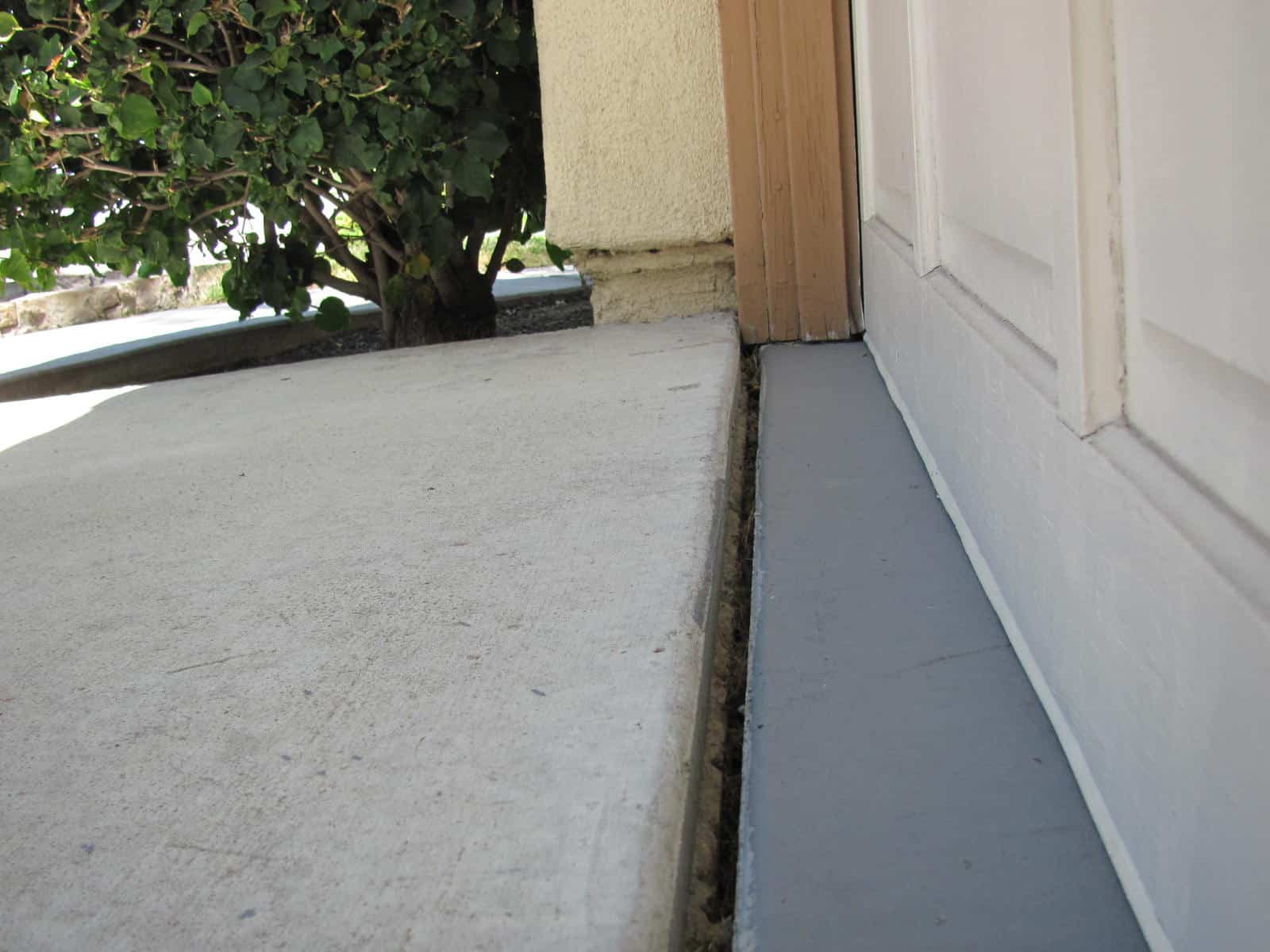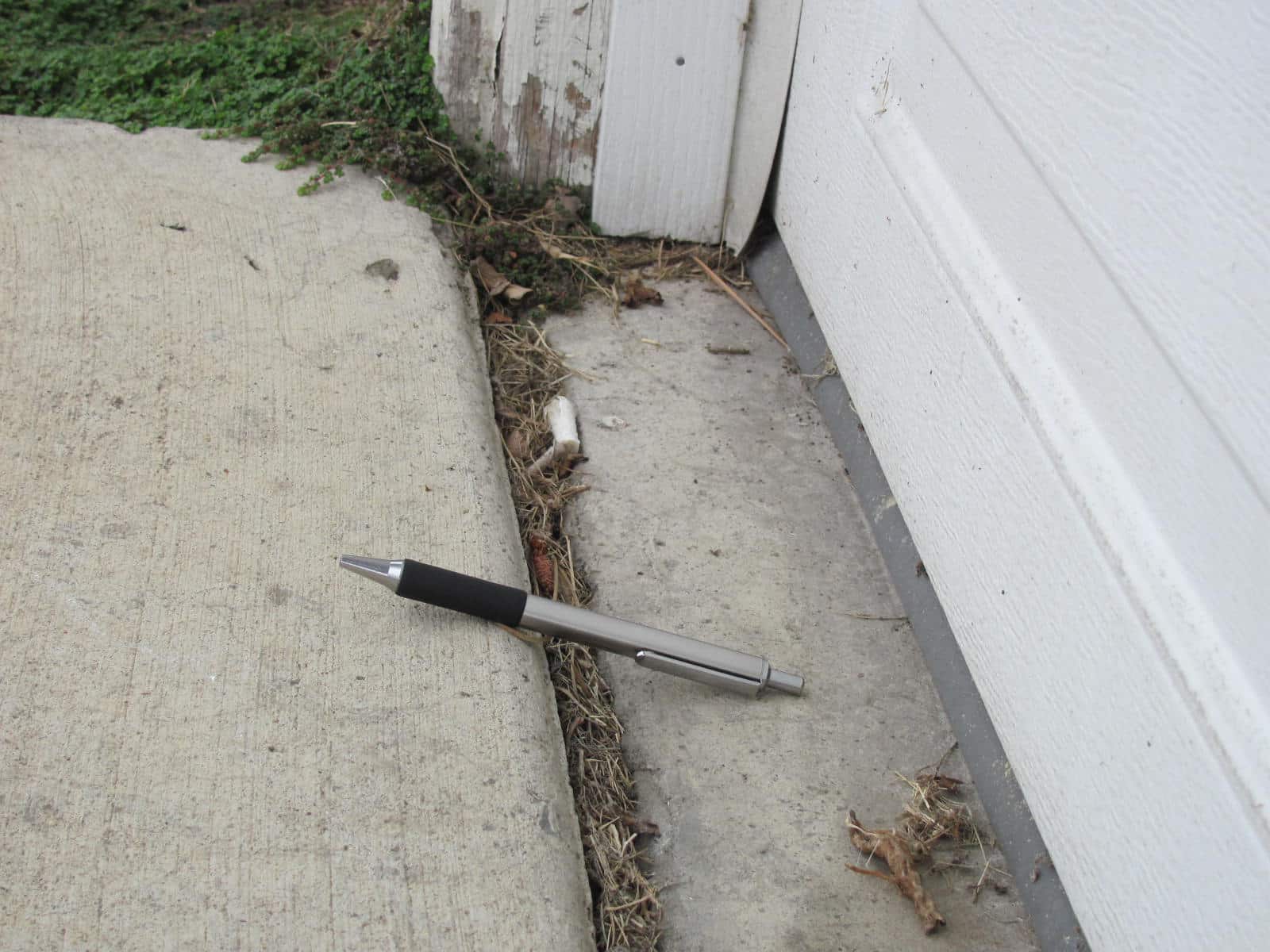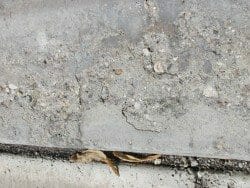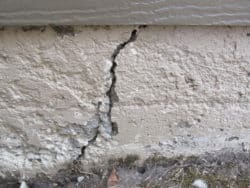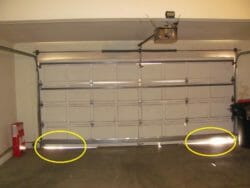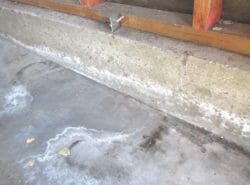Water running or draining into the garage
Home » Yard, drive, walks, patios » Drains and Drainage »
Water drainage into the garage
The two areas that most often allow water to enter and settle onto a garage floor are a side or back door to the exterior of the garage or the bottom area of the vehicle door.
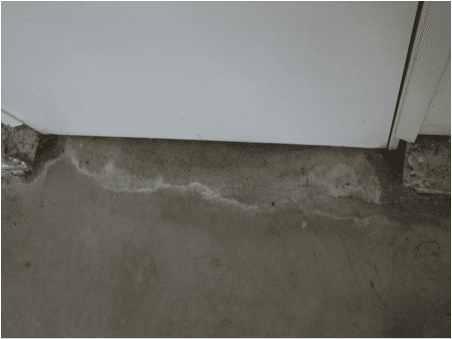
Side door moisture
Garages that have a side door to the exterior often have stains or other evidence of water seeping under the door and into the garage. More times than not, there is no threshold at the bottom of this door. If the exterior area is level with the garage floor, then in a rain, water can be blow in or run under the garage door.
If there is no threshold under the door, then adding a threshold may reduce or prevent water from coming in. It is critical that when installing a threshold, that it be well caulked and sealed at the bottom as well as at the two ends. If there is an existing threshold, it may need to be re-caulked or occasionally replaced.
If the exterior by the garage side door is too high, then some form of a drain can be added to help channel the water away from the area.
Vehicle door area – moisture running into the garage
Rubber gasket / seal missing or repair needed
During rains, if the bottom area of the garage door is not sealed or has a damaged rubber gasket on it, then water may blow or run under the garage door into the garage. It is not unusual for gaskets on the bottom of garage doors to be worn or damaged. Generally a homeowner would view this as a maintenance type issue and repair or replace the bottom door gasket. If there is no gasket, then adding one will stop or at least reduce moisture from getting in.
Sloped driveways
When a driveway slopes toward the garage door their needs to be a way for the water to be channeled away from the garage door, instead of allowing it to run into the garage. When there is a drain in this area, check to see if it is clogged or if it is free flowing. If it is clogged, then taking a hose and running water through it may clear it out. If the hose technique doesn’t work, it may require a plumber to snake out the drain or do other work in order to get it flowing properly.
When the drive is sloped toward the garage door and there is no drain, and the concrete is not sloped in a way that diverts the water, then a small channel could be placed in the concrete across the front of the garage door area. Consulting with a drainage specialist and/or a plumber may reveal a number of solutions for this issue. Sometimes, when the subject of putting a drain into concrete comes up, people jump to conclusions as to how costly it may be, but getting a quote or prices from several concrete contractors to put a drain in, may reveal that it is not too costly.
In some instances, buyers have put a small concrete speed bump across the garage door opening, which blocks the water from entering into the garage. This is another option that is usually not very expensive.
Why does the concrete rise up in front of the garage door?
- Is it expansive soils that lifted the concrete?
- Is it that the garage floor sunk down? Settled.
- Was the concrete placed that way to start with?
- Did a tree root push up the concrete in front of the door?
First, we can generally eliminate #3. Most concrete contractors or builders would not pour the concrete higher than the garage floor for they would worry about rain water draining into the garage.
There is a possibility that a tree root may have pushed the concrete up; #4. Take a look to see if there is any evidence of tree roots near by and if they look like they’re the cause. If so, and the problem is just beginning, you may want to trim back the root. Don’t kill the tree. If the problem is more significant, then the concrete may need to be jack hammered out, the roots cut, and new concrete put back in.
The two most probable causes are soil movement, either # 1 or #2
If #2, settlement, then the garage and floor may have settle some. Settlement on new homes may occur in the first couple of years but generally only a small amount. Note, that is not to say that more settlement will not occur as a home ages. (Read more on settlement)
Expansive soils, #1, is the most likely cause in most parts of the country. When expansive get damp or wet, they will generally exert strong upward pressure on the concrete above them, thus pushing up the drive area above the garage floor level. (Read more on expansive soils)
Who to consult? Landscapers, handymen and occasionally a concrete contractor.
Diverting water is usually a matter of re-grading an area and may need a drain occasionally. Landscapers and sometimes gardeners, usually do this type of work. If a small drain is needed in a concrete drive, then a concrete contractor or qualified handyman can usually do this work.
